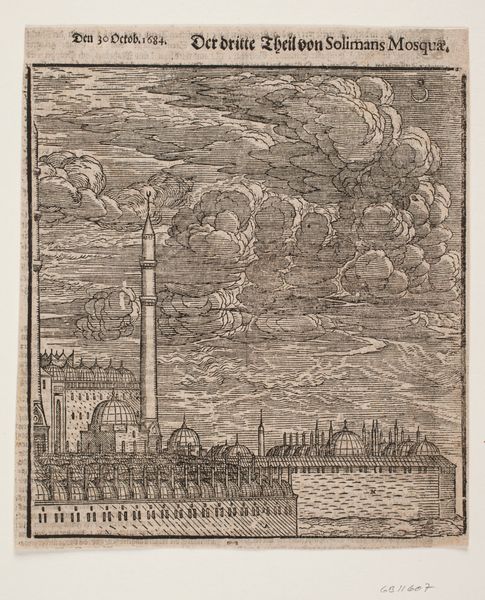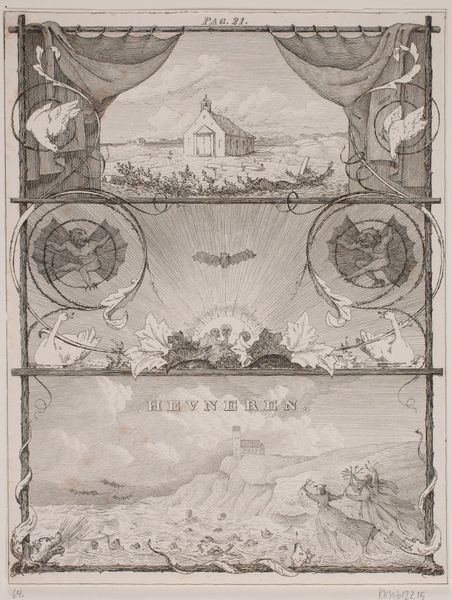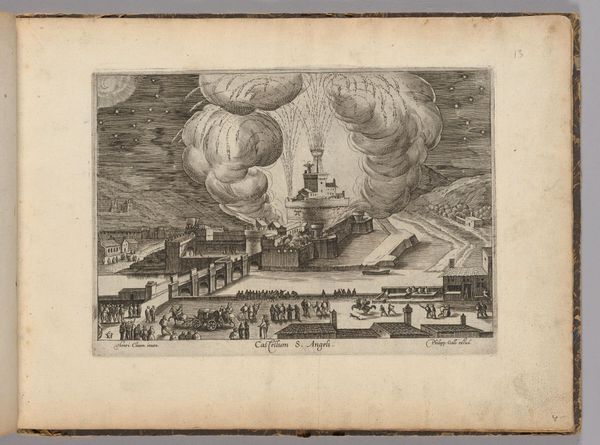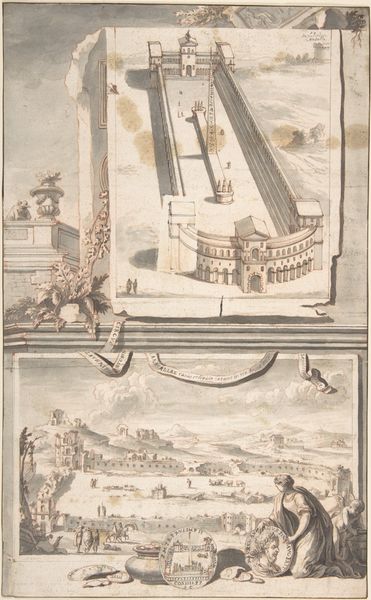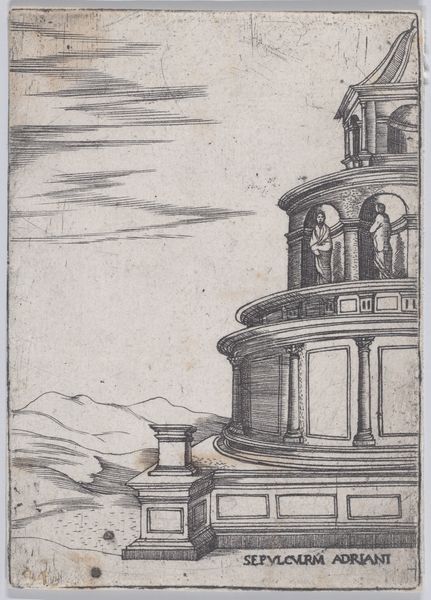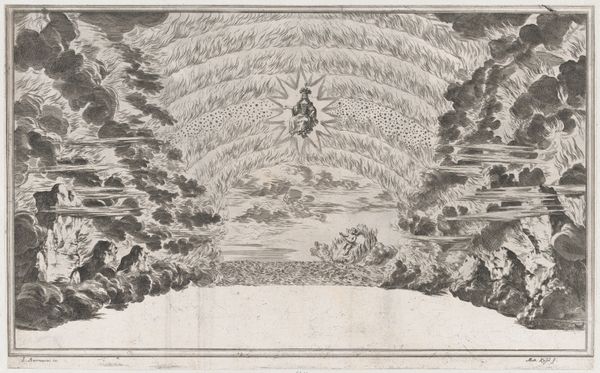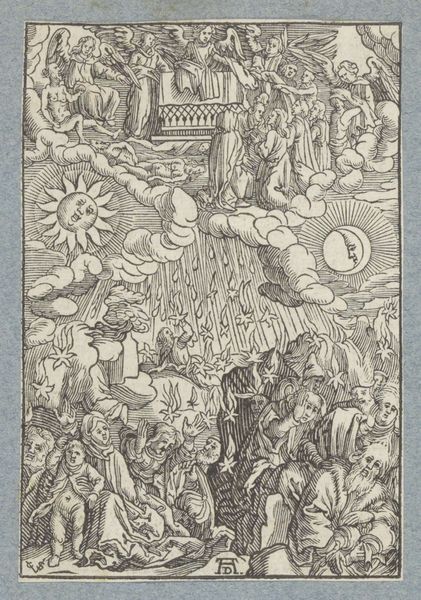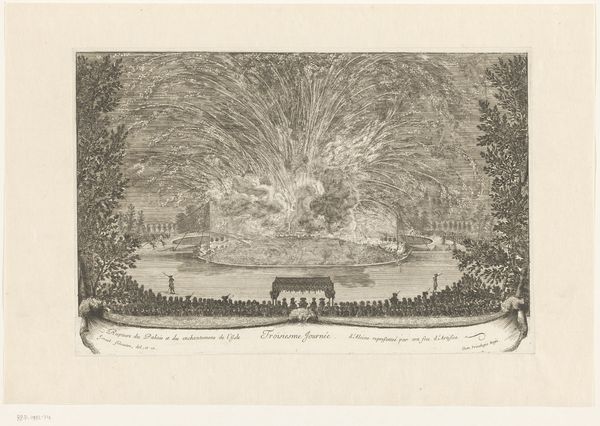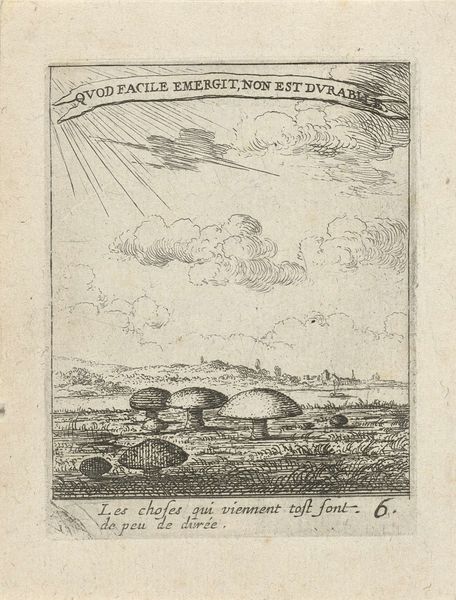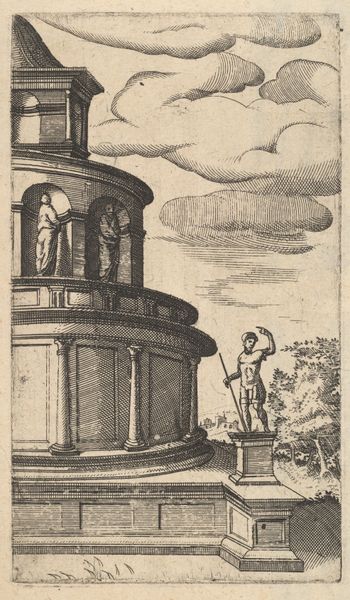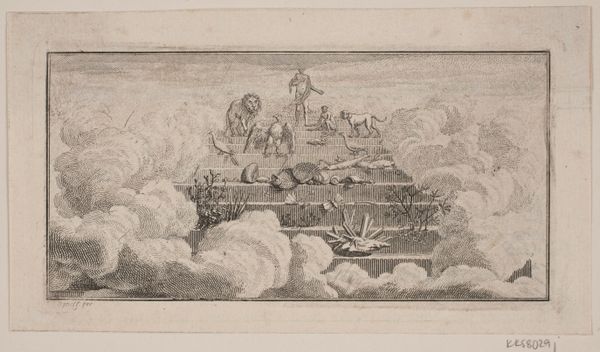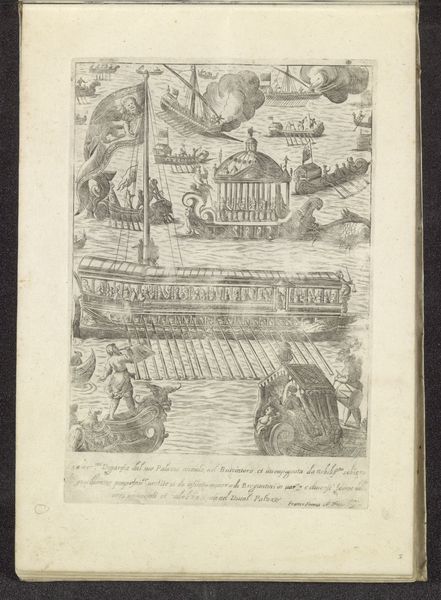
The Süleymaniye mosque, as seen from from the northeast. Left half 1570
0:00
0:00
drawing, print, woodcut
#
drawing
# print
#
etching
#
woodcut
#
pen work
#
cityscape
#
islamic-art
Dimensions: 205 mm (height) x 175 mm (width) (bladmaal)
Editor: So, here we have Melchior Lorck's "The Süleymaniye Mosque, as seen from the northeast," created around 1570. It's a woodcut and etching, and it’s remarkably detailed. The celestial event dominating the sky definitely grabs your attention. What do you see in this piece beyond a mere architectural study? Curator: Beyond the structure itself, which speaks of power and faith, I'm drawn to that striking celestial display. Lorck places an emphasis on the symbolic interaction between divine portents and earthly achievements. How would you interpret such juxtaposition? Is this Lorck's commentary on the Mosque, perhaps hinting at larger, uncontrollable forces at play? Editor: It almost feels like Lorck is imbuing the scene with a sense of both awe and perhaps, unease? As if the mosque's grandeur is being watched, even judged. It does add complexity to what could've been just a record of architecture. But, why include it? What did this meteor signify to viewers in the 16th century? Curator: Meteors, comets, eclipses... these were all ripe with symbolism. Often viewed as omens, messages from the divine. Depending on the context – the patron, the intended audience – it could herald prosperity or warn of impending doom. Here, juxtaposed against the Süleymaniye, a symbol of Ottoman power, the celestial event forces a dialogue between earthly and cosmic authority. Did this mosque bring enlightenment, was it seen as heaven-sent? Editor: I hadn’t thought about the dialogue between "authorities". Now I'm thinking, this isn’t just a picture of a mosque; it's a snapshot of a world where signs and symbols carried immense weight. Curator: Exactly! Lorck captures that world, inviting us to decipher the symbols and question the narrative they weave. It reveals a past brimming with complex codes, fears, and aspirations. A symbol doesn’t have a single stable reading: culture influences every act of perception, recollection and representation! Editor: It really highlights how much more there is to an image than what's initially visible. Thanks!
Comments
No comments
Be the first to comment and join the conversation on the ultimate creative platform.
